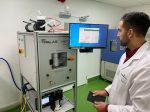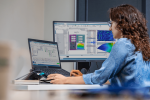Surf Loch creates the perfect wave
Surf Loch has been developing wave-making technology since the 1980s, and is using software from Siemens’ Xcelerator portfolio and automation technology to create wave pools that deliver ocean-quality waves which can be tailored to each individual surfer. By combining the digital and real worlds in a comprehensive digital twin, Surf Loch has been able to master the creation of custom waves through software simulations, before building and testing in a physical facility. This has enabled Surf Loch to deliver waves that match the needs of the surfer and produce them consistently and reliably according to their individual skill level. In addition to its software solutions, Surf Loch leverages other parts of Siemens’ Digital Enterprise portfolio, such as automation and drive technology, to optimize their surf pools. “When we make a wave, we’re controlling every aspect of how that wave gets formed, to the 1000th of a second,” said Tom Lochtefeld, founder and CEO of Surf Loch. “Working with Siemens gives us the unique ability to connect the real and digital worlds to achieve that level of precision. By embracing this kind of digital mindset, we can provide surfers with 400 waves an hour; in the ocean, the average surfer would be lucky to get five.” Surf Loch’s vision is to make the sport accessible to anyone anywhere while not compromising on the unique ocean experience. As surfing continues to increase in global popularity, Surf Loch aims to attract and serve more surfers in their pools to reduce the overall human impact on natural beaches. Surf Loch uses a range of solutions from the Xcelerator portfolio to create different wave variances while still ensuring they feel like surfing on the ocean. The team creates a digital twin of the wave, and then uses computational fluid dynamics (CFD) analysis and multidisciplinary optimisation […]









